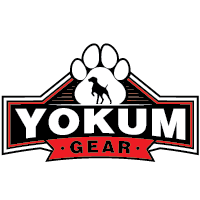When it comes to taking your furry friend out for a walk, safety, and comfort are paramount. A high-quality body leash can make all the difference in ensuring both you and your dog have an enjoyable experience. But with the myriad of options available, how do you determine the best body leash for your canine companion? This article will guide you through the key factors to consider when choosing the ideal body leash for your dog.
Understanding the Different Types of Body Leashes
Body leashes come in several forms, each offering unique benefits and features. Understanding these types can help you make a more informed decision:
- Standard Leashes: Traditional leashes that attach to a collar or harness. They offer control and simplicity but might not be ideal for training purposes.
- Retractable Leashes: These leashes allow your dog to explore a wider area, with an adjustable length mechanism. However, they can sometimes encourage pulling and may not provide as much control.
- Bungee Leashes: Featuring elastic components, bungee leashes are designed to absorb shock and reduce the strain on both dog and handler, making them ideal for active or strong dogs.
- Hands-Free Leashes: Often worn around the waist, these leashes offer convenience for joggers or those who prefer to keep their hands free. They're especially useful for active lifestyles but may require more initial training.
Material and Durability
The material of the body leash is a crucial factor in ensuring its longevity and safety. Common materials include:
- Nylon: Durable, water-resistant, and easy to clean. Nylon leashes are a popular choice for their strength and affordability.
- Leather: Offers a classic look and feel, along with exceptional durability. Leather leashes can become more comfortable over time but require more maintenance.
- Chain: Primarily used for dogs that chew through other materials. However, chain leashes can be heavy and may not be suitable for all dogs.
Comfort and Size
The comfort of your dog should be a top priority when choosing a body leash. Consider the width and length of the leash:
- Width: Wider leashes are generally more comfortable for larger dogs, while thinner leashes can be suitable for smaller breeds.
- Length: Determine how much freedom you want your dog to have. Standard lengths range from 4 to 6 feet, but some activities might require longer or shorter leashes.
A leash that's too long can decrease control, while one that's too short can restrict your dog's ability to explore.
Additional Features
Modern body leashes often come with additional features that enhance functionality and convenience. These may include:
- Reflective Strips: Enhance visibility during nighttime walks, ensuring both you and your dog are seen by motorists.
- Padded Handles: Provide extra comfort for your hands, especially during long walks or if your dog tends to pull.
- Multiple Attachment Points: Allow for versatility, such as hooking the leash to different parts of a harness or using multiple leashes for walking two dogs simultaneously.
Training and Usage
It's essential to pair a high-quality body leash with proper training to maximize its benefits. Ensure your dog understands basic commands and practice controlled walking to prevent pulling or other unwanted behaviors. Consistency and positive reinforcement can go a long way in making leash training a pleasant experience for both you and your dog.
Conclusion
Choosing the best body leash for your dog involves considering several factors, including type, material, comfort, size, and additional features. By taking the time to understand your and your dog's needs, you can select a leash that provides safety, comfort, and an enjoyable walking experience. Happy walking!

